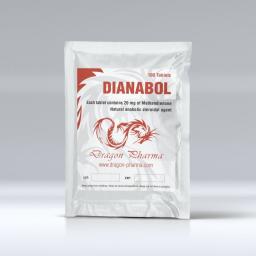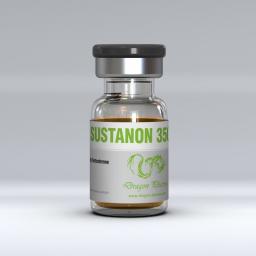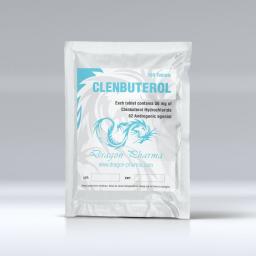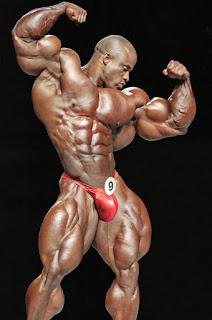Weight training involves the use of equipment that enables variable resistance. This resistance can come in the form of "free weights" like barbells and dumbells, machines that use cables or pulleys to help you lift the weight and bodyweight exercises like pull-ups or dips.
Free Weights vs. Machines vs. Bodyweight Exercises
For maximum muscle gain, the focus of your workouts should consist of free weight exercises. Not machines or bodyweight exercises. This is not to say that you should not use machines or bodyweight exercises, but they should not be the focus of your training. To get an effective, muscle blasting workout, you must stimulate the most muscle fibers as possible, and machines do not do this.
The main reason for this is a lack of stabilizer and synergist muscle development. Stabilizer and synergist muscles are supporting muscles that assist the main muscle in performing a complex lift. The more stabilizers and synergists worked, the more muscle fibers stimulated. Multi-jointed free weight exercises like the bench press, require many stabilizer and synergistic muscle assistance to complete the lift. On the other hand doing a bench press using a machine will need almost no stabilizer assistance.
Since machines are locked into a specific range of motion and help to support the weight along that path, they fail to stimulate the muscles that surround the area you are working (stabilizers). This is a mistake. If your stabilizer muscles are weak, then the major muscle group will never grow!
Free weight exercises like the dumbbell press or squat, for example, put a very large amount of stress on supporting muscle groups. That's why you will get fatigued faster and not be able to lift as much weight as you did on the machine. But you will gain more muscle, become stronger very quickly and have a true gauge of your strength.
If you use machines in your program, they should be used to work isolated areas and only after all multi-jointed exercises have been completed.
Beginners should begin with a limited combination of machine exercises, bodyweight exercises and multi-jointed free weight exercises. Before increasing the weight levels, they should work on becoming familiar with the proper form and execution of each. Soon, bodyweight exercises will become insufficient to stimulate growth and they will need to focus on more free weight exercises.
Multi-Jointed Exercises
The exercises that work the large muscle groups are called compound (or multi-joint) movements that involve the simultaneous stimulation of many muscle groups. These compound exercises should be the foundation of any weight training program because they stimulate the most amount of muscle in the least amount of time.
Here are the basic movements:
- Bench Presses (works the chest, shoulders, tricep)
- Overhead Presses (shoulders, tricep)
- Pull-ups/Barbell Rows (back, bicep)
- Squats (legs, lower back)
- Deadlifts (legs, back, shoulders)
- Bar Dips (shoulders, chest, arms)
They will overload your entire skeletal and muscular system like no machine could ever do, giving you and effective workout in a very short period of time. If you can only do a few exercises, then do these. They have been proven to encourage muscle and strength gain unlike any other exercises.
Lift Heavy Weight
To build mass, you must weight train with heavy weights. To consider a weight heavy, you should only be able to do a maximum of 8-12 reps before your muscles temporarily fail. A weight is considered "light" if you can do more than 15 reps before muscle fatigue sets in.
Heavy weights stimulate more muscle fibers than lighter weights. It's that simple. More muscle stimulation means more muscle growth.
Don't Overtrain
Heavy weight training puts a huge strain on your body, so adequate rest and recuperation after your workouts is essential. If you are prone to train too often, several things happen:
You don't give your muscles enough time to recuperate between workouts. If your muscles have not repaired themselves, you will not be at maximum strength for your next workout. Rest is essential. Other than eating, this should be your main focus.
You are setting yourself up for burnout or an injury. You must pace yourself. You want to be able to keep this up for a long time, not burnout before you reach your goals.
Contrary to popular belief, you do not grow while working out; you only grow when you are resting.
Below is an example mass workout.
Wednesday (legs, abs)
- Heavy Squats, leg extension superset
- Seated Calve Raises, 4 strips sets
- Crunches (4 sets of 20)
-------
Friday (chest, shoulder, triceps, abs)
- Flat bench press, incline dumbbell flyes superset
- Shoulder press, side raises superset
- Tricep pushdowns
- Reverse incline leg raises (3 sets of 20)
------
Sunday (back, biceps, abs)
- Wide grip pull-ups, latbar pulldown superset
- EZ bar bicep curl, incline dumbbell curls superset
- Crunches (4 sets of 20)
Nothing fancy, but effective.












